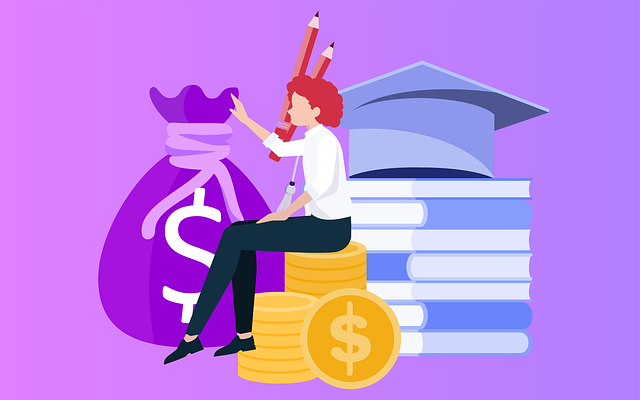Paying off a student loan can feel like carrying a backpack full of bricks—heavy, relentless, and always there. For millions of graduates, student debt is a reality that shapes financial decisions for years, sometimes decades. According to recent figures from the Federal Reserve, over 45 million Americans owe more than $1.7 trillion in student loans, with the average borrower facing a debt of about $37,000. That’s no small sum, and the pressure to pay it off quickly is real. But here’s the good news: with a clear strategy, discipline, and a few clever hacks, you can shave years off your repayment timeline. This article dives into practical, actionable ways to tackle your student loan faster while keeping your sanity intact.
2 Understanding Your Student Loan
What’s Your Loan Type?
Before you can outsmart your student loan, you need to know what you’re dealing with. Federal loans, like Direct Subsidized or Unsubsidized, often come with lower interest rates and flexible repayment options. Private loans, on the other hand, might have higher rates but less wiggle room. Honestly, I once spent hours digging through my loan documents just to figure out who my servicer was—turns out, it was right on the statement! Check your loan type, interest rate, and repayment terms on your servicer’s website or by calling them. Knowing these details helps you prioritize which loans to attack first.
Interest Rates Are Sneaky Thieves
Interest is the silent budget-killer. A 6% interest rate on a $30,000 loan can add thousands over a decade. For example, a standard 10-year repayment plan on that loan could cost you about $9,000 in interest alone, per a quick calculation from a loan amortization tool. If you’ve got multiple loans, focus on the ones with the highest rates first—this is called the avalanche method. It’s not glamorous, but it saves you money in the long run.
3 Building a Repayment Strategy
The Power of Extra Payments
Even small extra payments can make a dent. Say you owe $20,000 at 5% interest on a 10-year plan. Adding just $50 a month to your payment could save you $1,200 in interest and cut a year off your loan, based on basic amortization math. Always tell your lender to apply extra payments to the principal, not future payments—otherwise, they might just hold onto your money. I learned this the hard way when I tossed an extra $200 at my loan, only to see it sit in “pending” for months.
Avalanche vs. Snowball: Pick Your Fighter
The avalanche method (highest interest first) saves more money, but the snowball method (smallest balance first) gives you quick wins for motivation. A 2022 study from the National Bureau of Economic Research found that borrowers using the snowball method were 15% more likely to stick with their repayment plan. Choose what fits your personality. If you’re like me, seeing a loan disappear feels like crossing a finish line, so I leaned toward snowball for my smaller private loan.
4 Leveraging Income Opportunities
Side Hustles That Actually Pay
Extra income can turbocharge your student loan repayment. In 2024, about 40% of gig workers used their earnings to pay down debt, according to a Gig Economy Index report. Think freelance writing, pet-sitting, or driving for rideshare apps. I started tutoring high school kids in math for $30 an hour, which added $200 a month to my loan payments. Platforms like Upwork or Rover make it easy to start. Just don’t burn out—pick something you can sustain for at least six months.
5 Exploring Loan Forgiveness and Refinancing
Forgiveness Isn’t a Fairy Tale
Federal loan forgiveness programs, like Public Service Loan Forgiveness (PSLF), can wipe out your balance after 120 qualifying payments if you work in public service. About 35,000 borrowers had loans forgiven through PSLF in 2023, per the Department of Education. Check if your job qualifies—teachers, nurses, and nonprofit workers often do. Just make sure your loans and repayment plan are eligible, and submit your employment certification forms annually.
Refinancing: A Double-Edged Sword
Refinancing can lower your interest rate, especially on private loans. A 2024 SoFi report showed that borrowers who refinanced saved an average of $3,000 over their loan term. But here’s the catch: refinancing federal loans means losing access to forgiveness or income-driven repayment plans. I almost refinanced my federal loans for a 1% lower rate but held off after realizing I might qualify for PSLF. Weigh the pros and cons carefully and shop around for rates.
Income-Driven Repayment Plans
If cash is tight, federal income-driven repayment (IDR) plans cap payments at 10–20% of your discretionary income. About 8 million borrowers were enrolled in IDR plans in 2023, according to the Department of Education. These plans can lower your monthly burden, freeing up cash for extra payments on high-interest loans. Just know that lower payments might extend your loan term, so use this strategically.
Staying Motivated and Avoiding Burnout
Celebrate Small Wins
Paying off a student loan is a marathon, not a sprint. Set milestones—like paying off $5,000—and reward yourself with something small, like a nice dinner. A 2022 psychology study from UCLA found that small rewards boost long-term motivation by 20%. I treated myself to a $20 concert ticket when I hit my first $10,000 paid off. It kept me going.
Build a Support System
Talk to friends or family about your goals. I joined an online debt-free community, and swapping tips with others made me feel less alone. About 25% of borrowers in a 2023 Bankrate survey said peer support helped them stay on track. Find a Reddit thread or local meetup to share your journey—it’s surprisingly uplifting.
Don’t Let Debt Define You
It’s easy to feel like your student loan is your identity. I used to check my balance obsessively, stressing over every cent. But here’s the truth: you’re more than your debt. Take breaks, enjoy life, and remember that every payment gets you closer to freedom. A 2024 mental health survey by Student Loan Hero found that 65% of borrowers felt less anxious after making consistent payments for a year.
FAQ: Common Questions About Paying Off Student Loans
Can I Pay Off My Loan Early Without Penalties?
Yes, most student loans—federal and private—have no prepayment penalties. Double-check with your lender, but extra payments almost always go straight to the principal if you specify.
Should I Invest or Pay Off My Loan First?
If your loan’s interest rate is above 6%, prioritize paying it off. A 2023 investment analysis by Morningstar showed that stock market returns average 7–8% annually, so high-interest loans often outpace investment gains.
What If I Can’t Afford My Payments?
Contact your lender immediately. Federal loans offer deferment or forbearance, and private lenders might offer temporary relief. Ignoring payments can tank your credit score.




